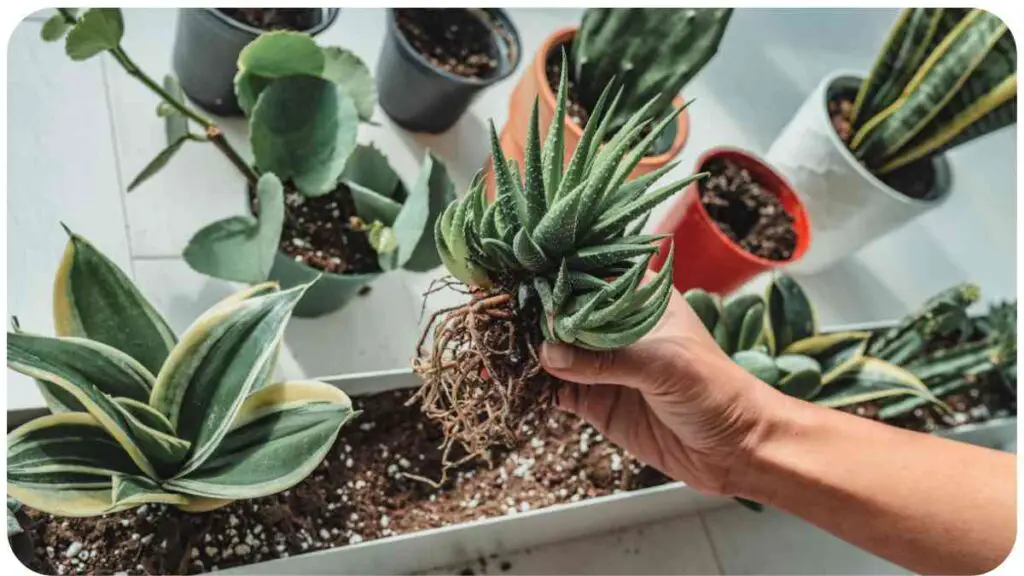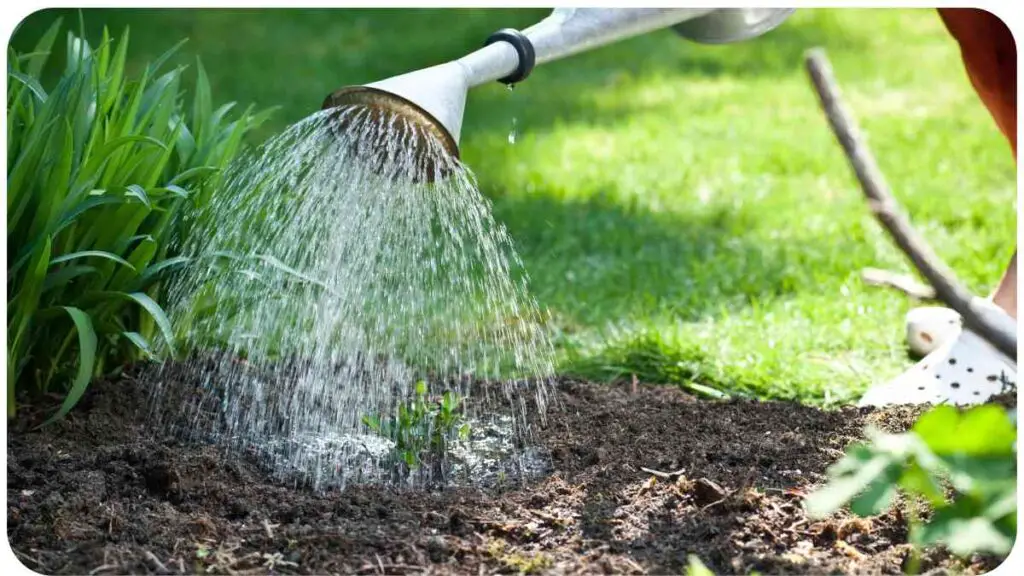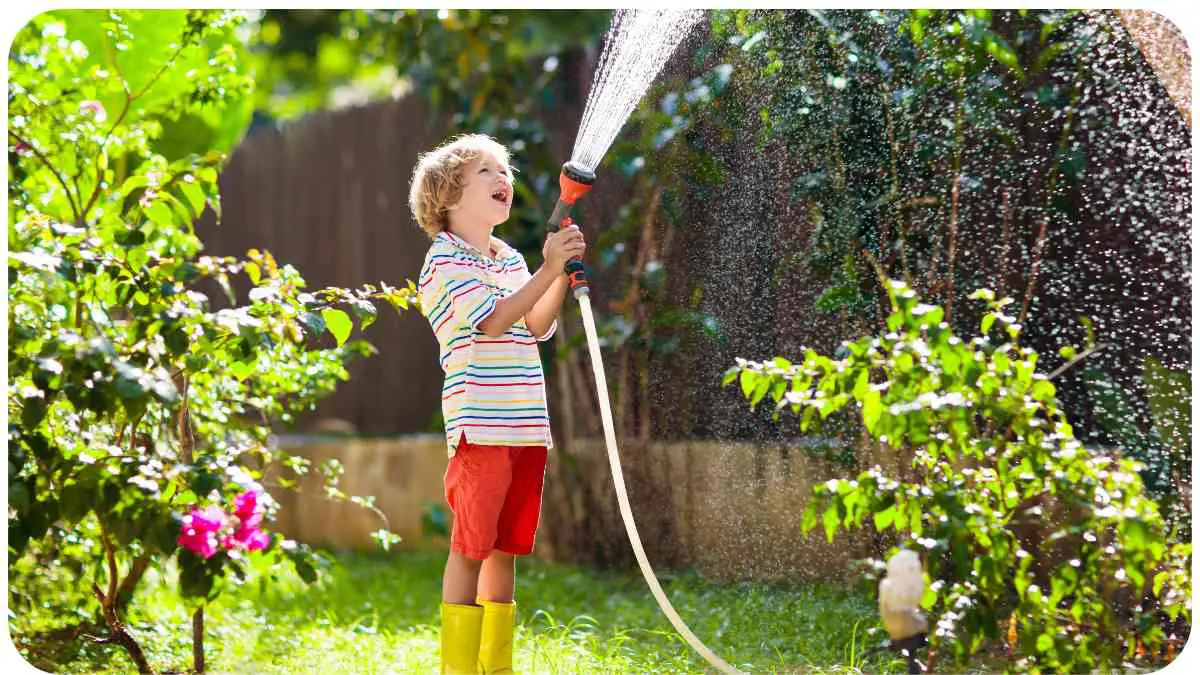As someone who has spent countless hours tending to gardens of various sizes and types, I can attest to the importance of proper drainage. It’s not just about keeping your plants happy – it’s also about preserving the structural integrity of your garden space.
In this article, I’ll delve into the world of garden drainage, sharing my experiences and insights while addressing common issues and practical fixes. By the end, you’ll be equipped with the knowledge to enhance your garden’s drainage system and ensure your plants and soil thrive.
| Key Takeaways |
|---|
| Proper drainage is essential for a thriving |
| garden and to prevent damage to the landscape. |
| Different soil types have varying permeability |
| that affects water drainage. |
| Slope and grading impact water runoff and |
| erosion, requiring careful consideration. |
| Obstructed drainage paths can lead to pooling |
| and waterlogging. |
| Identify issues like standing water and erosion |
| to address drainage problems early on. |
| DIY fixes include French drains and dry wells, |
| each with pros and cons. |
| Professional solutions like grading and |
| drainage systems can tackle severe issues. |
| Regular inspections and strategic landscaping |
| contribute to maintaining effective drainage. |
| Personal experiences offer relatable insights |
| into the challenges and rewards of drainage |
| improvement. |
| Enhancing drainage creates a resilient and |
| beautiful garden that thrives over time. |
Common Drainage Issues in Gardens

Before we dive into solutions, let’s explore the common culprits that lead to poor garden drainage. These issues often result from a combination of factors, each with its own unique impact on your garden’s health.
1. Poor Soil Permeability
Soil composition plays a crucial role in how effectively water is drained. Different soil types have varying degrees of permeability, affecting the speed at which water can infiltrate the ground. To illustrate this, let’s compare some common soil types:
| Soil Type | Permeability |
| Sandy Soil | High Permeability |
| Loam Soil | Moderate Permeability |
| Clay Soil | Low Permeability |
2. Slope and Grading Challenges
The slope of your garden can significantly impact water runoff. A steep slope might lead to water rushing off too quickly, causing erosion, while a flat surface can lead to water pooling. Here’s a breakdown of the effects of different slopes:
Drainage is a fundamental aspect of maintaining a healthy garden. For those struggling with waterlogged soil, it’s crucial to know how to add garden drainage effectively. This guide provides 13 ways to enhance the drainage system of your garden.
| Slope | Effects on Drainage |
| Steep Slope | Rapid Water Runoff, Erosion |
| Gentle Slope | Balanced Runoff, Reduced Erosion |
| Flat Surface | Water Pooling, Poor Drainage |
3. Obstructed Drainage Paths
Blocked drainage paths can spell disaster for your garden. It’s essential to identify potential obstructions that might impede water flow. Here are common causes of blocked drainage paths:
| Cause | Impact on Drainage |
| Fallen Leaves | Clogged Drains, Pooling |
| Debris from Landscaping | Restricted Water Flow |
| Soil Sedimentation | Reduced Drainage Capacity |
Identifying Drainage Problems
Spotting drainage issues early on can save you a lot of trouble down the line. Keep an eye out for these telltale signs of poor drainage:
1. Standing Water

Standing water can drown your plants and promote root rot. While some plants can tolerate wet conditions, others might struggle. Consider planting species that thrive in poor drainage conditions, such as:
| Plant | Preferred Drainage Conditions |
| Cattails | Wet, Boggy Soil |
| Ligularia | Moist to Wet Soil |
| Ferns | Constantly Moist Soil |
2. Erosion and Soil Shifts
Erosion can lead to soil shifts and uneven terrain. While some erosion is natural, drainage-related erosion can be detrimental. Here’s a comparison:
| Type of Erosion | Causes |
| Natural Erosion | Weather, Vegetation |
| Drainage-Related Erosion | Poor Grading, Runoff |
DIY Fixes for Garden Drainage
Addressing drainage issues doesn’t always require professional help. There are several DIY solutions that can greatly improve your garden’s drainage.
After a heavy downpour, standing water can ruin your plants and create a breeding ground for pests. It’s essential to understand how to absorb water in a garden to avoid these issues. Discover 12 sure ways to manage excess water and ensure your garden’s health
1. Installing French Drains
French drains are trenches filled with gravel or rock that redirect water away from problematic areas. Here’s a quick look at their pros and cons:
| Pros | Cons |
| Effective Water Diversion | Requires Regular Maintenance |
| Cost-Effective Solution | Professional Installation Recommended |
2. Building Dry Wells
Dry wells are underground chambers that collect excess water and slowly disperse it into the soil. The percolation rates of different soil types can impact their effectiveness:
| Soil Type | Percolation Rate |
| Sandy Soil | Fast Drainage |
| Loam Soil | Moderate Drainage |
| Clay Soil | Slow Drainage |
While DIY fixes can work wonders, there are instances where professional intervention is necessary to tackle severe drainage issues effectively.
3. Grading and Resloping
Grading involves reshaping the land’s contour to encourage proper water flow. Different techniques offer various benefits:
| Grading Technique | Benefits |
| Cut and Fill Grading | Corrects Slope Imbalances |
| Swale Creation | Redirects Surface Water |
| Terracing | Controls Erosion, Aesthetic Appeal |
4. Installing Drainage Systems
Professionally installed drainage systems can be a game-changer for problematic gardens. Let’s explore some types of drainage systems and their applications:
For plants to thrive, consistent and adequate watering is key. But, sometimes, irrigation systems can pose challenges. To keep your plants hydrated and flourishing, troubleshoot common irrigation system problems promptly. Dive into this comprehensive guide to address any irrigation issues you might face
| Drainage System | Application |
| French Drains | Managing Surface Water |
| Channel Drains | Capturing Runoff |
| Subsurface Drains | Handling Groundwater |
Maintaining Effective Garden Drainage
Once you’ve implemented the right solutions, it’s crucial to maintain your garden’s drainage system for long-term success.
1. Regular Inspections
Perform seasonal inspections to identify any issues that might arise. Here’s a checklist to guide your inspections:
| Seasonal Inspection Checklist |
| Clear Drainage Paths of Debris |
| Check for Standing Water and Address Promptly |
| Monitor Soil Erosion and Address as Needed |
| Evaluate Plants for Signs of Water Stress |
2. Preventive Landscaping
Strategic landscaping can work wonders for maintaining proper drainage. Opt for plants that enhance water absorption and reduce runoff:
| Plant | Water-Absorbing Qualities |
| Prairie Dropseed | Deep Root System, Drought Tolerant |
| Purple Coneflower | Improves Soil Permeability |
| Little Bluestem Grass | Controls Erosion, Native Species |
Personal Experiences and Lessons
Throughout my gardening journey, I’ve encountered my fair share of drainage challenges. One particular instance stands out when I revamped a waterlogged corner of my garden using a combination of French drains and carefully chosen water-loving plants. Witnessing the transformation reminded me of the power of effective drainage and inspired me to continue sharing my insights.
A lawn with uneven grass can compromise the beauty of your garden. It’s vital to pinpoint the cause and find steps for a smooth lawn. Read on to learn how to tackle uneven grass issues and transform your garden’s aesthetics
Conclusion
Enhancing your garden’s drainage is not just about preventing soggy soil – it’s about cultivating an environment where your plants can flourish. By understanding common drainage issues and implementing practical fixes, you can create a garden that’s not only visually appealing but also resilient against the challenges of excess water.
Whether you’re installing French drains, optimizing soil permeability, or strategically landscaping, the journey to improved drainage is a rewarding one. So roll up your sleeves, put on your gardening gloves, and embark on this journey to create a thriving garden space that stands the test of time.
In the end, remember that while challenges might arise, the satisfaction of seeing your plants thrive and your garden flourish will make it all worthwhile. Happy gardening!
Sprinkler systems are a boon for garden enthusiasts, ensuring that plants get watered evenly. However, leaks can occur. To maintain an efficient watering system, learn how to solve sprinkler head leaks. This troubleshooting guide offers valuable insights into identifying and fixing common sprinkler problems
Further Reading
If you’re eager to delve deeper into the realm of garden drainage, these resources offer valuable insights and practical advice:
Mazze Gas Landscaping Supplies: How to Improve Drainage in Your Garden Short Description: This comprehensive guide provides step-by-step instructions on enhancing your garden’s drainage system, including practical tips and solutions.
Better Homes & Gardens: Tips to Improve Poor Drainage in Your Landscape Short Description: Learn from experts about common drainage challenges and their solutions, with a focus on creating a landscape that thrives in optimal drainage conditions.
EasyMerchant: A Complete Guide to Garden Drainage Short Description: Discover a comprehensive guide to garden drainage, featuring insights into the importance of effective drainage, DIY fixes, and professional solutions.
FAQs
How does poor soil permeability affect garden drainage?
Poor soil permeability, such as clay soil’s low drainage capacity, can lead to water pooling and plant stress due to insufficient water drainage.
What are the benefits of installing French drains in my garden?
French drains effectively redirect excess water, preventing waterlogging and soil erosion. However, regular maintenance is essential to ensure their continued efficiency.
How can I identify blocked drainage paths in my garden?
Blocked drainage paths can be identified by observing standing water or slow drainage during rainfall. Fallen leaves, debris from landscaping, and sediment accumulation are common culprits.
What plants thrive in poorly drained areas of my garden?
Plants like cattails, ligularia, and ferns are well-suited to wet or constantly moist soil conditions, making them ideal choices for areas with poor drainage.
How can I prevent erosion caused by poor garden drainage?
Proper grading techniques, like swale creation and terracing, can help manage runoff and prevent erosion. These methods redirect water flow and promote soil stability.
What are the key components of a professionally installed drainage system?
Professional drainage systems, including French drains, channel drains, and subsurface drains, are designed to manage different types of water flow, whether it’s surface water or groundwater.
How can I maintain effective drainage in my garden throughout the year?
Regular inspections to clear drainage paths and address standing water are crucial. Additionally, choosing water-absorbing plants and monitoring erosion can contribute to maintaining optimal drainage.
Can I improve my garden’s drainage on my own, or do I need professional help?
Many drainage issues can be addressed with DIY solutions like French drains or dry wells. However, for more complex problems, seeking professional advice and assistance is recommended.

Hi! My name is Hellen James, and I’m here to help you with your home-maintenance needs. Whether it’s building a better yard or just trying to fix a garden—I can show you how.


